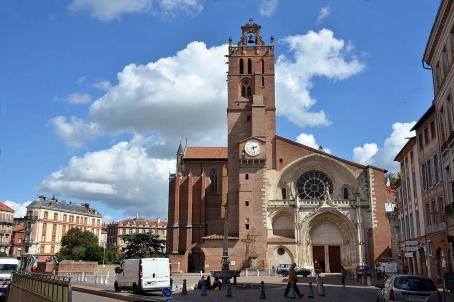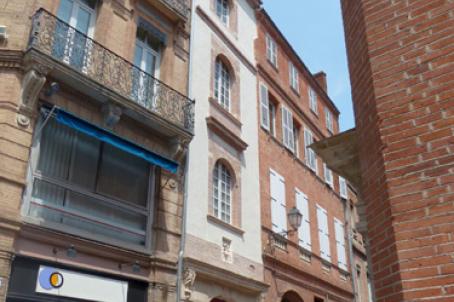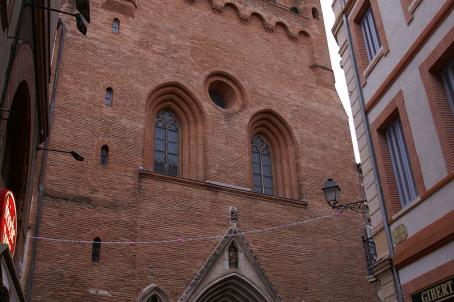Church of Saint-Aubin
Designed according to the plans of the architect Auguste Delort, the church was built on the site of a former vast cemetery common to the parishes of Saint-Etienne, Saint-Sernin, Notre-Dame-du-Taur and Saint-Michel, which was in use from 1780 to 1840, before being disused in favour of that of Terre-Cabade. Faced with the impatience of the inhabitants of the district, a first parish service was established as early as 1849 following the completion of the first crypts. Due to a lack of financial means, the work progressed chaotically. Seven years later, despite its official opening for worship, the church is far from being completed. Even today, its bell tower and vaults have still not been completed.
About this building
Of all the religious buildings in Toulouse, the Saint-Aubin church is undoubtedly one of the most atypical. Its massive appearance - 100 metres long and 32 metres wide - combined with Gothic, Romanesque and Byzantine influences stands out in the ecclesial landscape. Its construction rests on a base formed by the crypts and consists of a central nave and two side aisles where the various chapels are arranged. On the entrance facade, a statue representing Saint-Aubin, bishop of Angers in the 6th century, welcomes the faithful.






